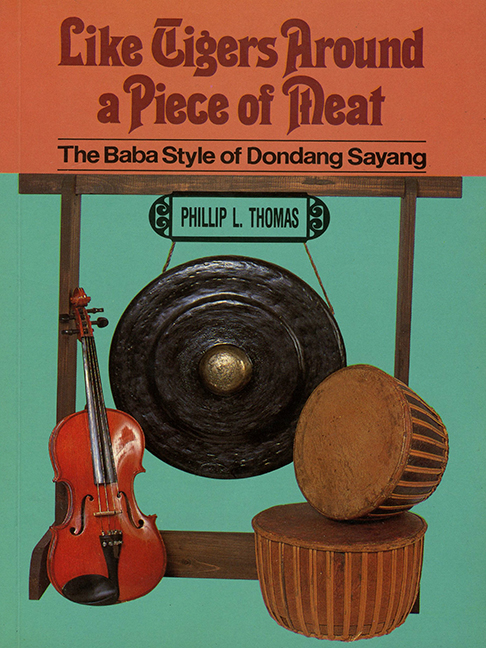1 - A BRIEF HISTORY OF DONDANG SAYANG
Published online by Cambridge University Press: 21 October 2015
Summary
The term “Baba” is applied to the Chinese living in Malaysia and Singapore who, for the most part, speak Malay as a home language and have adopted elements of Malay cooking and dress. Most Babas — a female Baba is a “Nonya” or “Nyonya” — trace their ancestry from Fukien province in southern China. Sufficient diversity exists among the Babas that for many of them not all of these characteristics equally apply. For this discussion, “Baba” will primarily refer to the Chinese of Singapore and Malacca who speak Malay as a home language and who have made as part of their cultural entertainment the singing of the Malay poetic form known as “Dondang Sayang”. This is a very limited set of those labelled as Babas, and much of the acrimony in the recent literature no doubt arises from attempts to generalize across groups which have only superficial resemblances.
Dondang Sayang is a traditional Malay verbal art which employs a complex poetic form known as the pantun and requires a knowledge of such diverse aspects of Malay culture as fishing, cooking, farming, and history. In its unelaborated form, Dondang Sayang uses a small orchestra consisting of one or two Malay drums (rebana), a Western violin (biola), and a gong (gong). Guitars, an accordion, Western drums, a tambourine, a flute, or an additional violin may supplement the core instruments. The orchestra and singer perform the song in three parts which come together at distant points of the musical phrases. The gong and drums play coordinated rhythms; the violin's melody, which shares only its key with that of the singer, offers little vocal support; and the singer sings in whatever key she or he prefers, taking care only to match the violin's cueing phrases.
Many violinists who are competent performers of the repertoire of traditional Malay songs (lagu asli) confess their inability to approximate even a mediocre rendition of the music for Dondang Sayang.
- Type
- Chapter
- Information
- Like Tigers Around a Piece of MeatThe Baba Style of Dondang Sayang, pp. 3 - 10Publisher: ISEAS–Yusof Ishak InstitutePrint publication year: 1986

